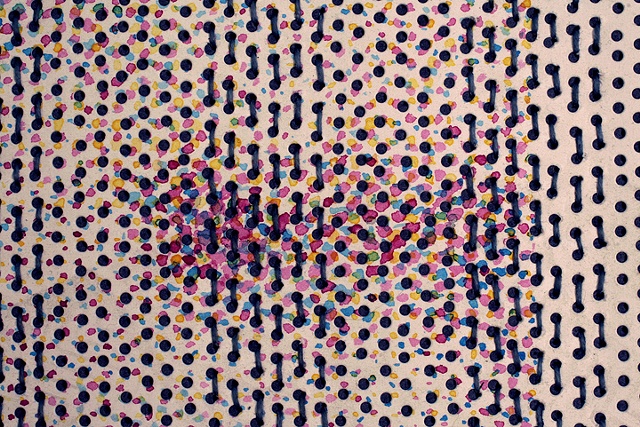Columbus, OH
3/06/10 5:45 PM
Two-dimensional work is all too often taken at face value, as if it were really two dimensional, as if everything really lay on its surface. But masks hide faces, skin sheathes bone and sinew, muscle and flesh. In Ian Ruffino’s prints, a top layer of paper often hides a remarkable density of material — and, it would seem, meaning. Take the work titled Misspelled Word. On its surface, an appealing enough abstraction of speckled pastel colors, textured stitching, punched holes and ballpoint pen striations. But the paper is sewn to something underneath it, layers and layers of thick handmade paper in shades of blue, grey and purple. Read the materials list and discover that these sheets are made from a year’s worth of the artist’s clothing. Why does he only wear clothes in colors of bruise? Why does he not have more clothing? Why was he willing, or desiring, to rid himself of all his clothes from that year? All of Ruffino’s work functions thusly, with first impressions reading an abstract surface appealing enough but mostly a disguise of some sort for the complications hidden underneath and hinted at in the captions, which might list lint as a medium (whose lint?), or the layers themselves (what’s on the surfaces we can’t see?), or even the backside (why is the stitching so messy back there?). Ruffino’s not going to tell us what it all means, but he seems to have made a project of hinting at its existence.
—Lori Waxman
